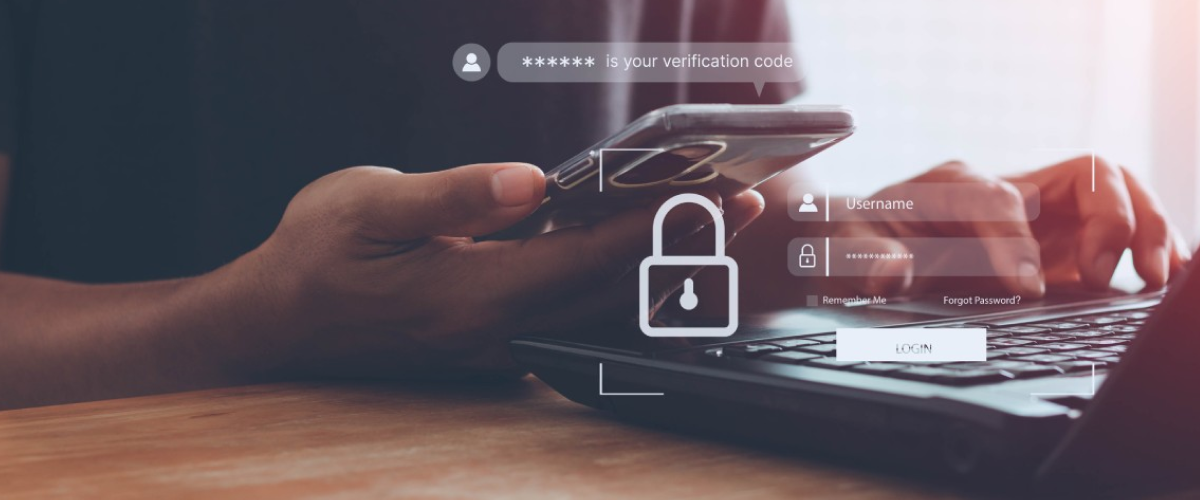If you are a Bank of South Texas customer, you must have been prompted to enable two-factor authentication. So what is it, and why does it play an important role in ensuring cybersecurity in banking? We will find answers to all these questions and more in this article.
What is Two-Factor Authentication?
Two-factor authentication (2FA) is basically a security system that adds an extra layer of protection beyond traditional password-based authentication.
It is also known as two-step verification or dual-factor authentication, as it involves the use of two distinct authentication factors to access something. The authentication factors are usually something the user knows, like a password, and a second factor, like a PIN, fingerprint, or a code sent to the user’s smartphone.
In general, the majority of online users are at risk of compromising their passwords, especially if they use the same password on multiple websites. Hence, this extra step of authentication in the 2FA system makes it harder for hackers to gain access to your devices, online accounts, and other private and sensitive information.
How Does Two-Factor Authentication Work?
In general, the working of two-factor authentication will vary depending on the application. However, the process usually involves the following steps:
- The application or website prompts you to log in
- You enter a username and password
- The site’s server finds a match and then recognizes you
- In some cases, the website generates a unique security key instead of a password. When this happens, the authentication tool processes the key while the site’s server proceeds to validate it.
- The website will then ask you to initiate the second login step, which involves providing biometrics, a security token, an ID card, OTP, or other inherence factors.
- Once you provide both factors, you will finally gain authentication and get access to the application or website.
Authentication Factors of The Two Factor Authentication (2FA)
The two-factor authentication system usually features a combination of something you know, which could be a password, and something that you receive, like a code sent to your smartphone or other device or the use of your biometrics like fingerprints, face, or retina.
- Knowledge factor
A knowledge factor could either be something that you know, like a password or a personal identification number (PIN). It could also come in the form of a shared secret or security question. - Possession factor
A possession factor is usually something that you possess, like an ID card, a security token, a cellphone or other device, or even a smartphone app that can approve authentication requests. - Inherence factor
An inherence factor is something that you possess inherently or in your physical self. The best examples of this factor are fingerprints, while other examples include facial and voice recognition, speech patterns, etc. - Location factor
A location factor usually denotes the location from where an authentication attempt is happening. You can enforce such factors by limiting the authentication attempts to specific devices in a particular location. This is done with the help of services like Global Positioning System (GPS) obtained from your mobile phone or other similar devices.
2FA and Cybersecurity in Banking
While online banking provides you with the ability to carry out a range of banking tasks online, it still poses a risk of leaking all your private information. This is when 2FA comes in as a very practical solution.
- Double the security
In general, the 2FA system involves two types of authentications when you make any attempts to log in. This means that you practically double the security of your bank login whenever you use the 2FA system, giving you a more secure login. - Combatting cybercrimes
The majority of cybercrimes that occur across the world today generally involve hackers trying to access bank account details. Such criminals generally obtain a person’s online banking details using their username and password information. When they gain access to the private details of your bank account, they can simply gain access to all your banking data and control over your account. This is much worse than when you simply lose your credit or debit card.
However, when you enable 2FA, you can stay safe online because the 2FA involves two steps of authentication. As such, even if a hacker obtains access to your username and password, they still cannot log in to your online banking account without bypassing the other authentication factor. - An extra verification layer
In most cases, the other authentication factor comes as an OTP through your registered mobile number, or it could involve using your fingerprints or facial ID. The two-factor authentication process ensures that only authorized individuals can gain access to their sensitive information or carry out online transactions.
Enable Two-Factor Authentication in Online Banking Now!
While using 2FA may not offer a foolproof solution to securing all your sensitive information, it boosts cybersecurity in banking compared to traditional methods. It makes it difficult for any attacker to impersonate you and access your account. It adds an extra level of fortification that could mitigate identity theft while also reducing fake online transactions.
Hence, you should ask your bank to enable 2FA if you use online banking because it offers a user-friendly way of adding an extra layer of protection.
If you are a Bank of South Texas customer and want to enable 2FA in your online banking, contact us today.


